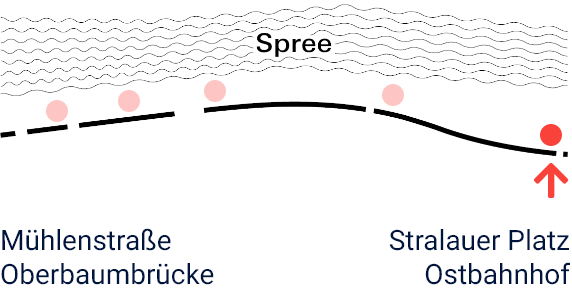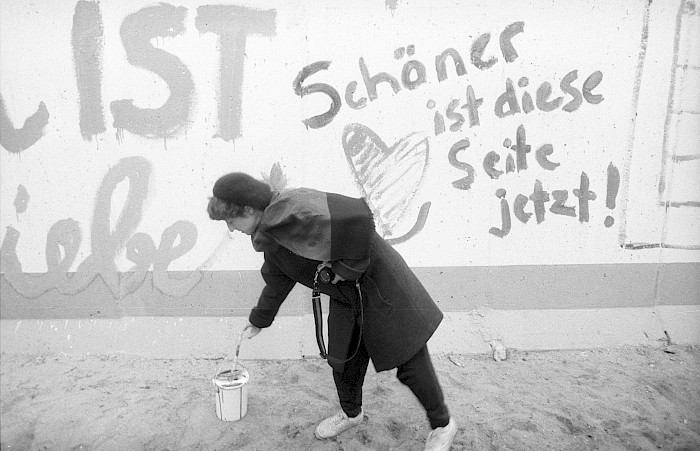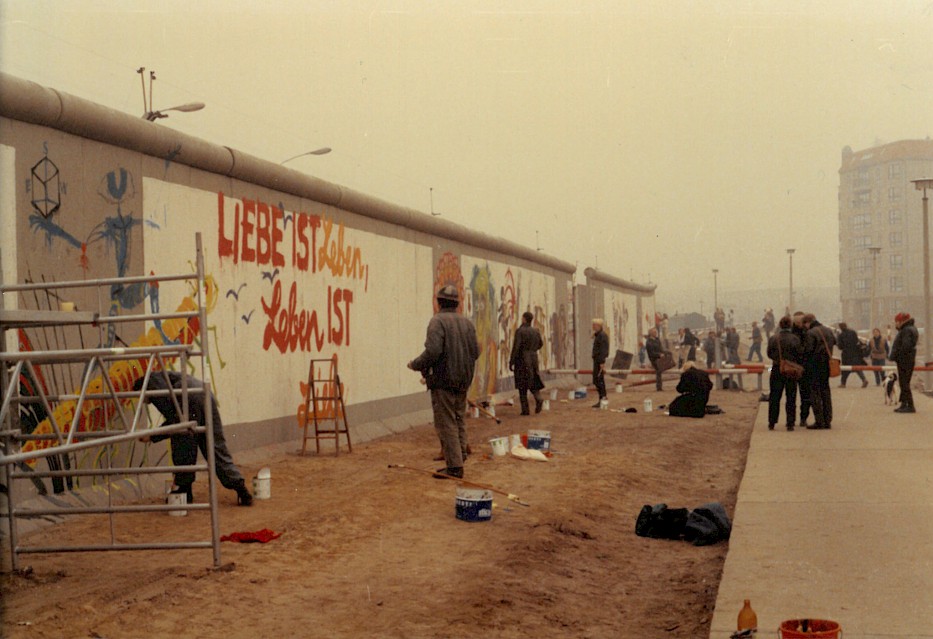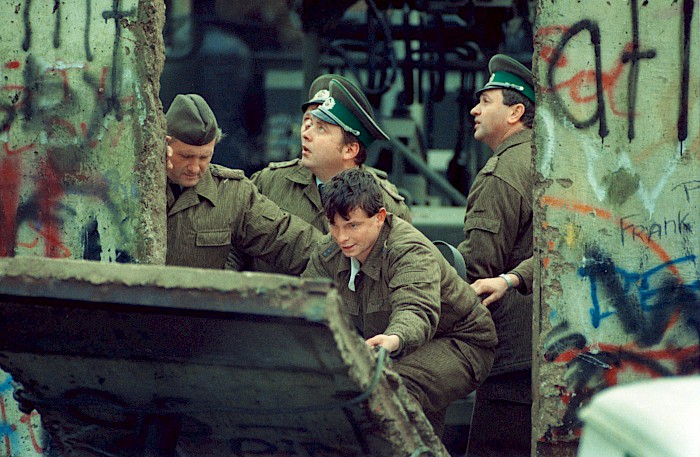1980
– 1991

People started to write comments on the west side of the Berlin Wall as soon as it was built in 1961. In the 1980s young artists such as Thierry Noir and Kiddy Citny were among the first to paint on the concrete. The response was overwhelming. The colourful wall became a West Berlin landmark; members of West Berlin’s subcultures used the Wall to get their messages across in art and graffiti. They changed the face of the border in West Berlin and made it seem less threatening. But since even the west side of the Wall stood on GDR territory, painting on it was not without risk. Some artists were arrested by East German border soldiers.
"I painted on the Wall to highlight its absurdity."
As soon as the border was opened, artists in East Berlin wanted to change the face of the Wall. The Association of Visual Artists of East Berlin invited artists to paint on the east side of the Wall at Potsdamer Platz. The GDR border soldiers tolerated the painting at first but later whitewashed over it. When Heike Stephan from East Berlin and David Monty from West Berlin applied for permission to paint on the Berlin Wall, the GDR authorities allocated them the 1.3-km-long stretch of the Wall at Mühlenstraße. This became the East Side Gallery.


After the border was opened in 1989, most Berliners were in favour of dismantling the Wall. A few campaigned to keep it as a monument. The painted Wall segments in Mühlenstraße were listed by the State of Berlin as early as 1991: Because they had been artistically appropriated, the Berlin Monument Authority considered them to be of special historical significance. Thanks to the long-term commitment of the artists and the artists’ initiative East Side Gallery e. V., the paintings and the Wall have been regularly cleaned and restored since then.

The artist Kiddy Citny painted several pictures on the Wall in West Berlin in the 1980s. His painting for the East Side Gallery commented on German unification in 1990: Qui baise qui (Who’s screwing who) portrays it as West Germany’s exploitative takeover of East Germany.